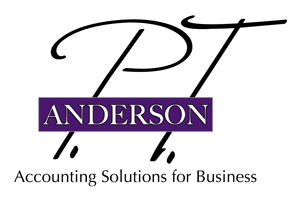Outsmart your accountant and other financial friends with these accounting-related definitions: Read more
 Fiscal Year
Fiscal Year
Most companies report their results on a calendar year, from January 1 through December 31. A fiscal year is a range of a year that a company may use for accounting and tax purposes. For example, Intuit’s fiscal year runs from August 1 to July 31. A nonprofit commonly runs from July 1 to June 30.
The word fiscal alone refers to government or public revenues and expenditures. The fiscal year refers to the period when a company reports its financial results to the public.
Budget
Most companies sit down once a year and plan what they intend to spend. This set of numbers is a budget. The budget is prepared in income statement format which includes planned revenue and expenses.
A common report that compares budget to actual figures is the Income Statement Comparison to Budget which includes columns for month and year-to-date actual, budget, and variance (the difference).
Forecast
While a budget is a longer term plan, a forecast is an attempt to predict the short-term future. Forecasts can be made for cash flow, predicting your bank account balance, or can be focused on potential profit for a period. A forecast is created by enumerating current and expected short-term cash commitments.
General Ledger
A general ledger is a fancy word for your accounting books. It’s also a very specific report that lists each account within the chart of accounts, beginning balances, the activity of each account for a particular period of time, and ending balances. It includes both balance sheet accounts, such as cash, accounts receivable, and accounts payable, and income statement accounts.
Fixed Asset
A fixed asset is an asset that includes items such as land, vehicles, furniture, buildings, office equipment, plants, and machinery. Fixed assets cannot easily be converted into cash (cash equivalents are termed current assets) and they must last longer than one year. They are physical or tangible (as opposed to intangibles such as patents and trademarks).
Depreciation
Most fixed assets except land depreciate in value over time. For example, when you drive a new car out of the lot, no one will give you what you just paid for it. This reduction in value over time is recognized on accounting books by recording depreciation. Since assets need to be recognized at market value, depreciation is an estimate of this adjustment. Depreciation becomes an expense and reduces the value of the fixed asset but does not affect cash.
Accrual
There are two ways to keep books when it comes to the timing of how items are recorded: the cash method and the accrual method. Let’s invoke Popeye the Sailor Man’s friend Wimpy who always says, “I’ll gladly pay you Tuesday for a hamburger today.” Let’s say today is the Friday before this famous Tuesday.
If you are using the cash basis method, you would record the entire transaction on Tuesday, when you get the cold hard cash. If you are using the accrual basis, you would have two entries: one on Friday to record the sale to accounts receivable and one on Tuesday to zero out the receivable and increase cash. It’s the same net, effect; the only difference is in the timing.
Most small businesses that extend credit keep their books on an accrual basis so they can keep track of everything. Taxes are normally paid on cash-basis books, requiring adjusting entries at year end that reverse at the beginning of the year.
Balance Sheet
A balance sheet is a very common report of all of the business’s account balances as of a specific date, such as December 31. These accounts include cash, receivables, fixed assets, liabilities, equity and others.
Journal Entry
An adjustment made to the accounting books which increases one account and decreases another is a journal entry. In theory, every transaction made to a company’s books is a journal entry. When you write and cash a check, cash goes down and an expense goes up. When you receive a payment, cash goes up and revenue goes up. Each of these transactions is a journal entry.
Do you feel a bit smarter? Or a bit more comfortable in handling your company’s books? I’m not sure how exciting this is for cocktail table talk, but hopefully you feel smarter when it comes you’re your business’s accounting function.
If you feel your business needs further assistance in managing its books contact us. We provide accounting and bookkeeping services for companies like yours.
 Key Numbers – Cost Per Client Acquisition
Key Numbers – Cost Per Client Acquisition


